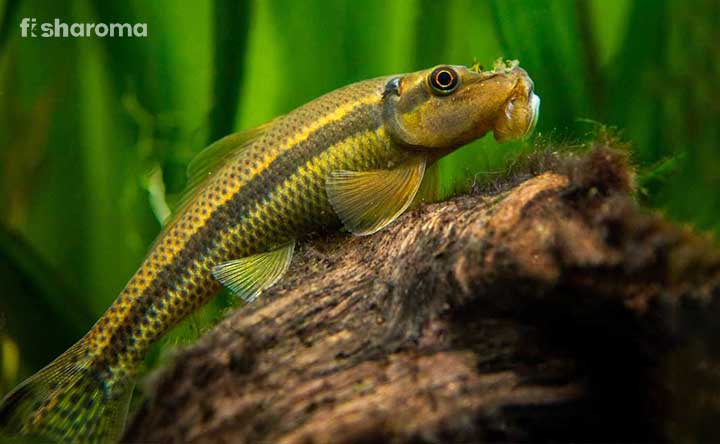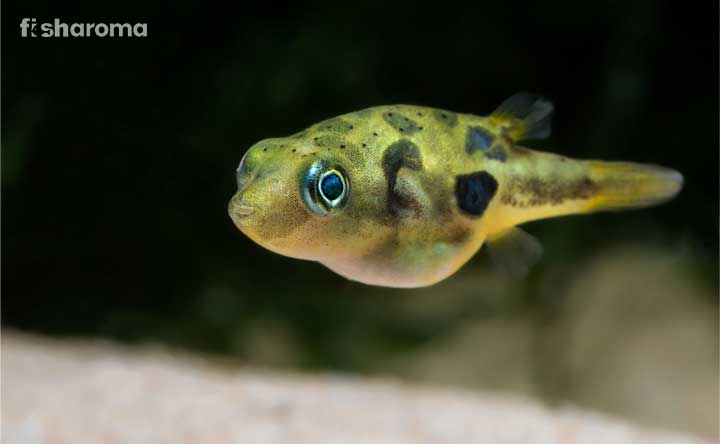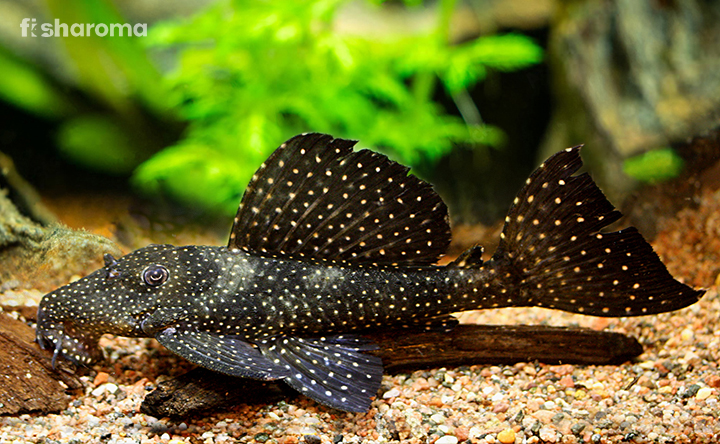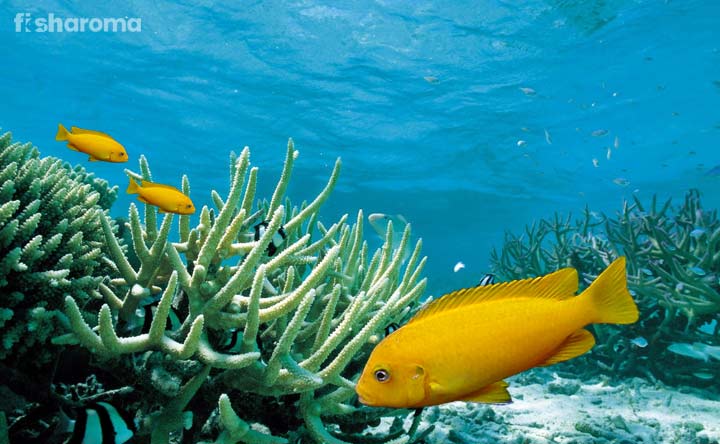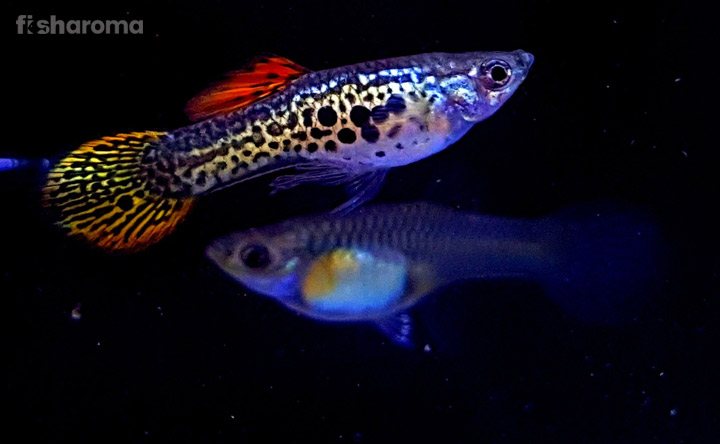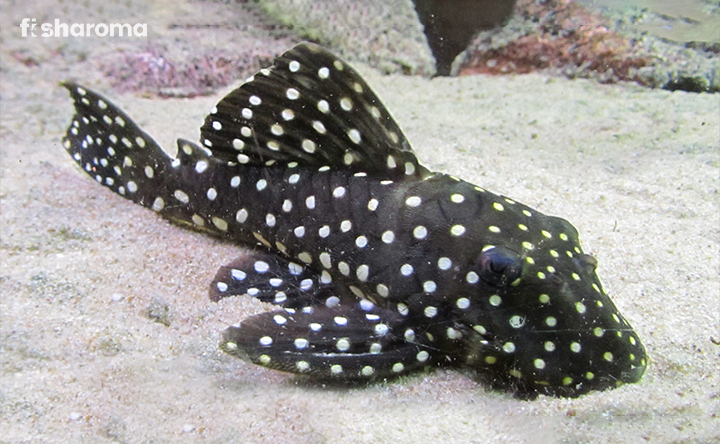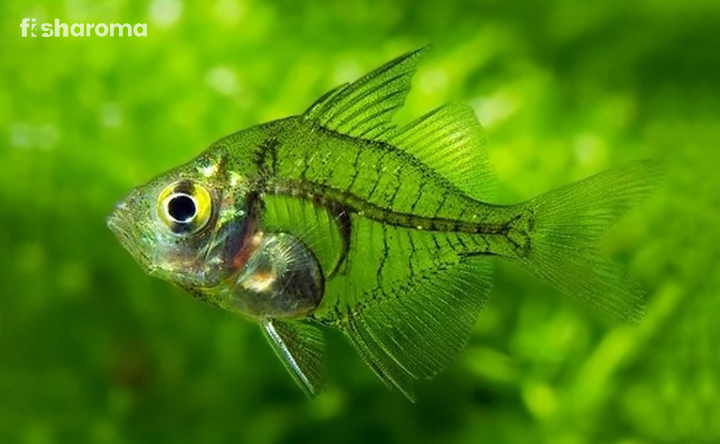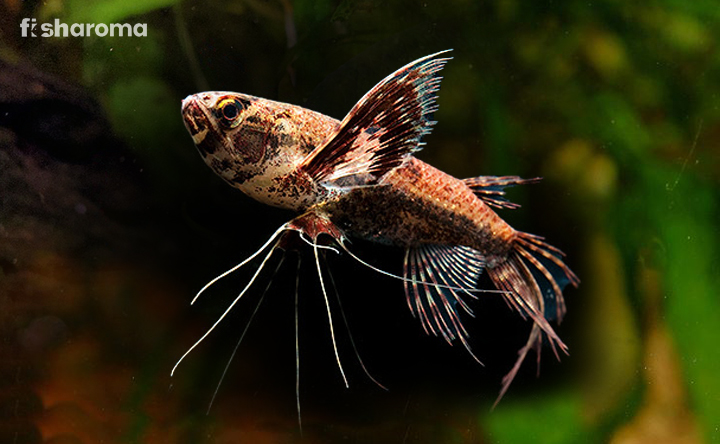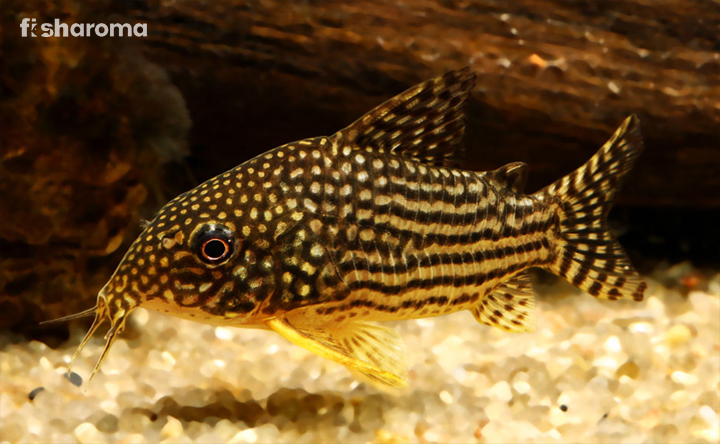Boesemani Rainbow: A Care Guide To Our Vibrant Buddy

- Origin & Habitat of Boesemani Rainbow
- Appearance of Boesemani Rainbow
- Behaviour of Boesemani Rainbow
- Lifespan of Boesemani Rainbow
- Diet of Boesemani Rainbow
- Tank Requirements for Boesemani Rainbow
- Water Type for Boesemani Rainbow
- Suitable Tank mates of Boesemani Rainbow
- Breeding of Boesemani Rainbow
- Diseases of Boesemani Rainbow
- Summary
Vibrant fishes with appealing colour combinations, and contrast, seem to get attention in the industry of aquariums. Boesemani Rainbow fish, also known as the Australian Rainbow fish, is a very colourful species. Well-known for their colourful appearance and quite attractive design, they put glory to the name.
Other than beautifying the aquarium perfectly, they are easy to care for, and that is how they appear to check all the boxes. We are here to make it even easier, and make everything you need to know available in our complete care guide, right on your finger-tips!
Key specifications
Before you proceed with the detailed article that follows, let us brief you real quick with some key specifications you must check:
| Scientific Name | Melanotaenia boesemani |
| Origin | Ajamaru Lakes and Aitinjo Lake are situated around the mountain ranges in the Vogelkop (Bird’s Head) Peninsula. Mostly found in West Papua and Raja Ampat islands, Indonesia. Eastern and Northern Australia, islands in Cenderwasih Bay, Madagascar, Sulawesi. |
| Lifespan | 5-8 years. |
| Colours/Patterns | Iridescent colouration like a blue, yellow or shiny silver. Commonly described as the blue head region with red rears. |
| Temperament | Peaceful |
| Size | Up to 4.5 inches. |
| Diet | Omnivorous |
| Family | Melanotaeniidae |
| Compatibility | Mostly compatible with similar fishes. |
| Tank size | Minimum 30 gallons. |
| Care level | Easy |
| Water preference | Freshwater |
Overview
Scientifically known as the Melanotaenia boesemani, a Boesemani Rainbow is a species of Melanotaeniidae. These are small fishes with vibrant colours found in places starting from parts of Australia to Indonesia. Now we may know them to be different, but there is a belief in Hinduism of these cute variants we know of today. They used to be immense in size almost like a sea monster, but now entirely different, rather the opposite of it.
The family Melanotaeniidae consists of 81 species, and the Boesemani rainbow is one of them. They are freshwater fishes so putting them in tanks might be a complicated task at first but they are not complex to care for, under aquarium circumstances.
Origin and Habitat of Boesemani Rainbow Fish
Originally belonging from parts of Indonesia and Australia, rainbowfishes are mostly found in densely plated vegetation with warm climate conditions and, not very deep water levels.
They stick to the regions with a shallow cover of nature, as in the deeper regions where there is an existing possibility of larger predators. The shallow regions provide a subtle level of security as they are middle dwelling species, like Tetras. Although, they are fast swimmers, which might result in slow-swimming species to feel a little anxious. It is recommended to pair them up with fishes who have similar characteristics and behavioural patterns, most importantly size.
Appearance of Boesemani Rainbow Fish
Relevant to their name, the rainbow fishes are very colourful and appealing to the eye. Their exquisite composition is fascinating, and their colour as a whole leans towards the iridescent range. The head section mostly showcases cool colours like purples, blues and greens. On the other hand, the rear has a warmer colour composition of orange, red and yellow.
Size
They are not very big in size, growing for just up to 4.5 inches/11 cm, so they are comfortable in small or medium tanks. They although, are fast swimmers and this particular nature might call for the need for some space. Just to play it safe, a minimum tank of 30 gallons is recommended.
Colour
As we know, they represent an iridescent pallet on their body. Iridescent colour variants in fishes look very unique, and aesthetic. They look similarly appealing in the aquarium, as they do in their natural habitat, if taken well care of. If not, they might lose their colour.
The head is mostly covered with cool colours like purples, blues and greens. On the other hand, the rear seems to have warm colour compositions of yellow, red or even orange. They might not be able to alter their colours, but the intensity of it can be controlled. A clear reflection of health, or even mood is clearly visible just from the intensity of colours on their body.
Intensity, if high, might indicate whether a fish is healthy or prepared to mate. If not, and the colour is towards the pale side, it might point towards some kind of stress or illness. There is a huge need for this particular species to have a nutritious diet, for the sake of their vibrancy.
Behaviour of Boesemani Rainbow Fish
They are mostly peaceful, but more than one male rainbow fish in the tank might cause some aggression issues. They are capable of even injuring each other around the time of mating. Boesemani Rainbow is a moderately hardy breed, but shy on their own, and a group of six, or perhaps eight appears to be a good number for the tank. A large shoal of this breed must be established to prevent stress, which might result in discolouration.
Although, they are relatively flexible when it comes to the choice of tank mates, they should preferably be kept with similar breeds. In easier terms, they must not be overpowered by other breeds in terms of size. It has also been recommended to not pair them up with fishes, of clashing nature. Aggressive fishes are better kept away, as they themselves do not pose any other behavioural threats or whatsoever.
Lifespan of Boesemani Rainbow Fish
They live a standard lifespan of about 5 to 8 years, but they are quite expensive. It is a good investment considering the fact they don’t have extremely complex special needs. They are mostly compatible as well and let us be honest, they are drop-dead gorgeous in the tank. Their handling can be easily done by a beginner aquarist, some research work is necessary.
Diet of Boesemani Rainbow Fish
The Boesemani Rainbow follow an omnivorous diet, so they are not very picky about their food choices, eating most things. The only factor that might lead to limitations in their textbook preference, is possibly their small mouths. Around the time of feeding, it is suggested to cut down the food in order to make the process easy.
To make It easy for you, here is a list of a few things you can add to their diet while feeding:
- Small insect Larvae
- Cut down plant matter.
- Dried fish food like flakes or pellets.
- Frozen fish feed-ables.
- Mosquito Larvae
- Daphnia
- Spinach
- Zucchini
Tank Requirements for Boesemani Rainbow Fish
To make the living conditions filled with comfort and appropriate for the rainbow fishes, the tank needs to be kept a certain way. The special needs are fortunately, not very complex.
Emulating the natural habitat in the aquarium is always a good idea.
Tank Lid
It is important to keep the tank lid in check, as they tend to jump, or leap quite often. If not careful enough, this movement characteristic of theirs might lead to an accident. Other than that tank lids, in general, protect the tank water from pollution.
Tank size
A minimum tank size of 30 gallons is recommended for their ease of movement. They are not very big, but they are active swimmers. Smaller spaces than the stated measurements, might limit them and make them feel uncomfortable. So, to play it safe, it is our suggestion to go up to 50-60-gallon tanks.
Substrate
A substrate of sand is recommended if you wish to bring home, these beautiful beings. They are used to the dense vegetation scenario and a sandy base.
Filter
They do not seem to produce extensive amounts of waste, but they would certainly benefit from a strong filter. The pristine water has its own benefits to the breed.
Ornaments
It is good for the tank to be surrounded by float-able plants, preferably live, to make them feel at home. Otherwise, the addition of flowers or anything that is natural is always a good choice. It really increases the aquarium’s appeal, and makes the fish feel free, and comfortable. Rocks or figurines do just fine, as long as they do not overcrowd the tank environment, as they need open spaces to support their free-swimming nature.
Lighting
Standard lighting works just fine, although the fishes may benefit heavily from natural sunlight.
Presence of Flora
There is no fish that does not like having vegetation in its vicinity. Still, overcrowding the tank with too many plants is not recommended, and a safe emulation of their natural habitat works well. Live rocks on the substrate are a good addition to keep it intact and in check.
Cleaning Method
The usage of chemical-based products is not necessary. They do not create a lot of waste, fairly regular or alternate cleaning should work. Cleaning and doing It right is extremely beneficial to the precious marine life, residing in the tank. It allows the fish to remain free of stress and healthy. To clear the filters, checking the water temperature and just an application of a soft piece of cloth, from time to time, does the job just fine.
Water Type for Boesemani Rainbow Fish
Shifting focus from the above-stated criteria, let us move on to the water profile that is necessary for the fellow breed, in order to appropriately survive under the aquarium situation.
Their water parameters can be slightly demanding compared to other tropical fishes. To keep it all in one place, we present you some pointers you need to add, to keep your water requirements in check:
| pH | Keep it between 7.0-8.0 (can be max kept up to 9.0) |
| Hardness | 9-19 KH or 10-20 dH |
| Temperature | Constant and tropical temperatures are necessary, ranging from 25-30 Degrees Celsius |
| Mineral | None as such. |
pH
A minimum pH of 7.0 is recommended, the range of up to 8.0 should be maintained. A balanced pH is good for fish health.
Hardness
Water hardness of 9-19 dKH or 10-20 dH is good. The hardness of water is beneficial for mineral concentration. Hence, the right concentration is necessary.
Temperature
25-30 Degrees Celsius is the desired temperature range that you must maintain. The temperature needs to be constant, as it plays a key role in the emulation of their natural habitat.
Mineral
They do not have specific mineral requirements, but common beneficial minerals are always a good choice for addition to the tank.
Compatibility
Ideally, they are mostly compatible, yet they have some specifics. It is good if you keep them with fishes of similar size and energy. They are factually fast swimmers, and their movement routine might overwhelm some fishes sharing the tank with them.
Suitable Tank mates for Boesemani Rainbow Fish
They are usually shy, and they feel at their best when kept with the shoal. To prevent stress, and intimidation of the other breeds, and also for the compatibility sake of rainbow fishes, here are a few buddies that you can pair them up with:
- Corydoras Catfish
- Rasboras
- Zebra Danio
- Pearl Danio
- Other Rainbow fishes.
- Large Tetras like the Cardinal variant. (more on that in our other care guide on this)
Breeding of Boesemani Rainbow Fish
There is not much information available on the breeding, or reproduction process of this magnificent rainbow fish breed. Details on the mating system are mostly unknown. A Boseman’s Rainbow fish can be successfully bred in captivity, as per research.
They will typically move forward with the mating process, in a pair or a group. The males show more vibrancy around the head region, it flashes around this time. The females on the other hand typically lay about 20 eggs, minimum of ten. The process happens around the early morning period. It takes about two weeks for the eggs to hatch. The fry after birth can be fed yolk reserves.
Diseases of Boesemani Rainbow Fish
This particular type of rainbow fish is relatively hardy and does not have many problems, if kept under a well-maintained tank scenario. They are resilient beings, but they are not invincible.
A few of the commonly known diseases in rainbow fish include the White Spot Disease. Aside from diseases, stress can prove fatal too if kept unchecked for a certain period of time. Feeding excessive amounts of food, or failing to keep up with the suitable parameters, can cause negative nourishment, which may lead to certain death in them too.
Treatment
Presenting you with some ways you can take care of your rainbow fish or prevent diseases from affecting them:
- Ideal water temperature maintenance is necessary. Usage of an aquarium heater is recommendation, they need their water to be warm or else, it may lead to problems in health or even loss of colour.
- We suggest you to keep them in groups to prevent stress.
- There is a need for a safe lid. As they are fast swimmers, naturally, their leaping ability is risky. The absence of the same may lead to an unfortunate accident, which is not good.
- The water parameters like nitrate levels, hardness or pH should be kept under check. An imbalance in that will make the fish prone to fatal diseases or death.
- The male Australian rainbow fishes need to be well-monitored or isolated during the time of breeding. Their aggression can cause a fatal clash and loss.
Summary
Boesemani Rainbow or Australian Rainbow fishes are beautiful and delicate fishes, which can glorify the aura of every aquarium. Their iridescence in colouration and easy maintenance is something that makes it an aquarist, or, hobbyist favourite. Definitely worth the price, as they do not really have extraordinary needs. Not very hard to find, we highly recommend these fishes for your aquarium. It is a perfect pick, as it does not fail to check all the boxes you need to fulfil your tank criteria.
The Boesmani Rainbow fish is endangered when it comes to numbers. They have a very unique trait of altering their colours as per their temperament, other than expressing ailment or stress, via fading or deepening of colours.
Similar Care Guides you may like
There goes some similar guides:
- Rainbow Shark Care Guide: Similarly vibrant and multi-coloured species like the Boesemani Rainbow, they originate from Thailand in South Asia.
- Discus Fish Care Guide: They are beginner-friendly fishes of calm nature and immense beauty living up to as long as 10 years.
- Shubunkin Goldfish Care Guide: One of the most well-known fishes in the industry, goldfishes are omnivores based in Japan.

